November 19, 2024
Temples in Bodhgaya - The Heart of Buddhist Pilgrimage
CM Content Team
Bodh Gaya, located in the Indian state of Bihar, is a revered pilgrimage destination known for its numerous temples in Bodhgaya and its rich spiritual heritage. This sacred town, part of the greater Gaya region, is renowned as the place where Prince Siddhartha attained enlightenment under the Bodhi Tree and became Gautama Buddha. The temples in Gaya, especially those in Bodh Gaya, are diverse, representing various Buddhist traditions from different countries, making it a unique cultural and spiritual hub. Each Bodh Gaya Buddhist temple offers a serene environment for meditation and introspection, attracting spiritual seekers and pilgrims from all over the world.
Here are 7 temples in Bodhgaya that stand out for their cultural significance and architectural beauty:
The best time to visit Bodh Gaya is between October and March. During this period, the weather is pleasant and cool, making it ideal for exploring the various temples and monasteries. This time also coincides with significant Buddhist celebrations, such as the Bodhi Day in December and various prayer festivals, offering a rich cultural experience. Additionally, the moderate temperatures and clear skies create a serene atmosphere, perfect for meditation and spiritual activities in the sacred town.
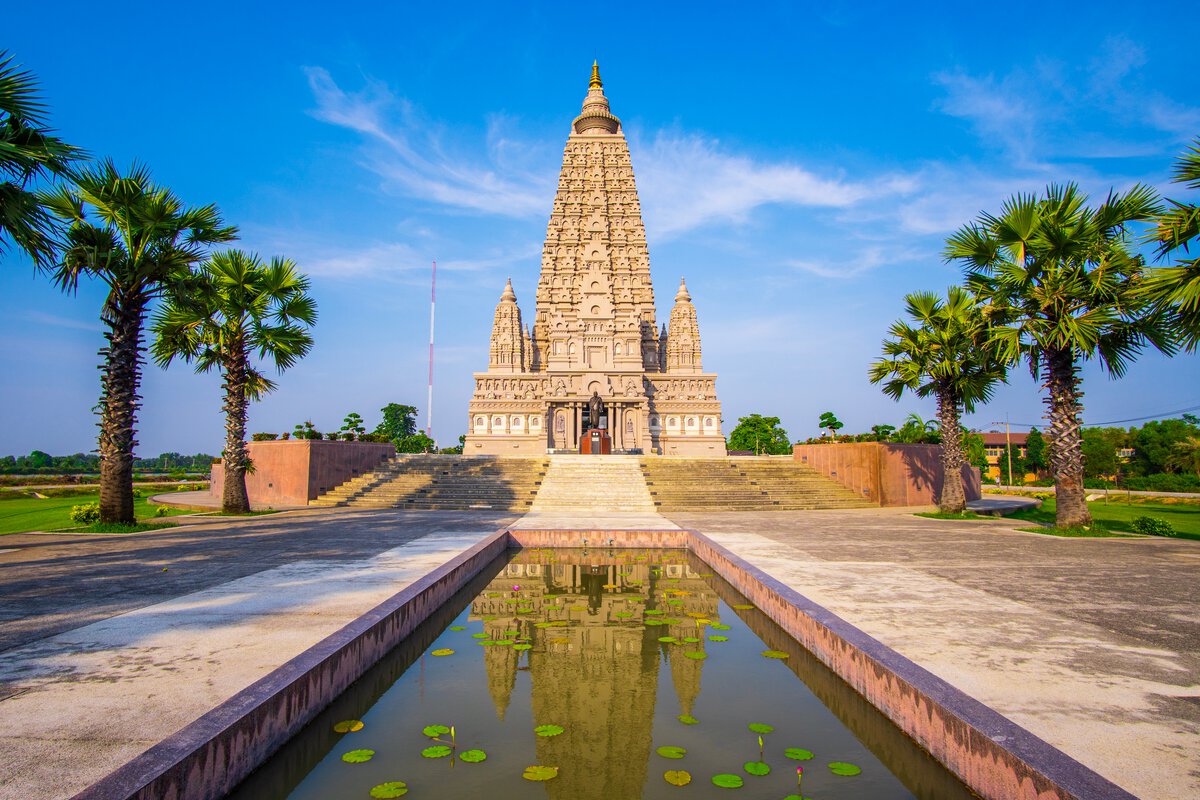
The Mahabodhi Temple in Bodh Gaya is one of the most revered and significant temples in Bodhgaya and holds immense spiritual importance in the Buddhist world. It is the exact location where Prince Siddhartha attained enlightenment under the Bodhi Tree, transforming into Gautama Buddha over 2,500 years ago. This UNESCO World Heritage Site is a symbol of peace, enlightenment, and devotion, drawing pilgrims and visitors from around the globe. The temple’s stunning architecture features a 170-foot-high pyramid-shaped tower, intricately carved with designs depicting various aspects of Buddha’s life. Within the temple complex, visitors can explore the sacred Bodhi Tree and serene meditation spots, making it a must-visit destination for those seeking spiritual solace and connection with Buddhist heritage. The Mahabodhi Temple stands as the heart of temples in Bodhgaya, representing the profound legacy of Buddha’s teachings.
When visiting the Mahabodhi Temple in Bodh Gaya, there are several key activities and sights that should not be missed. Here are the main four:
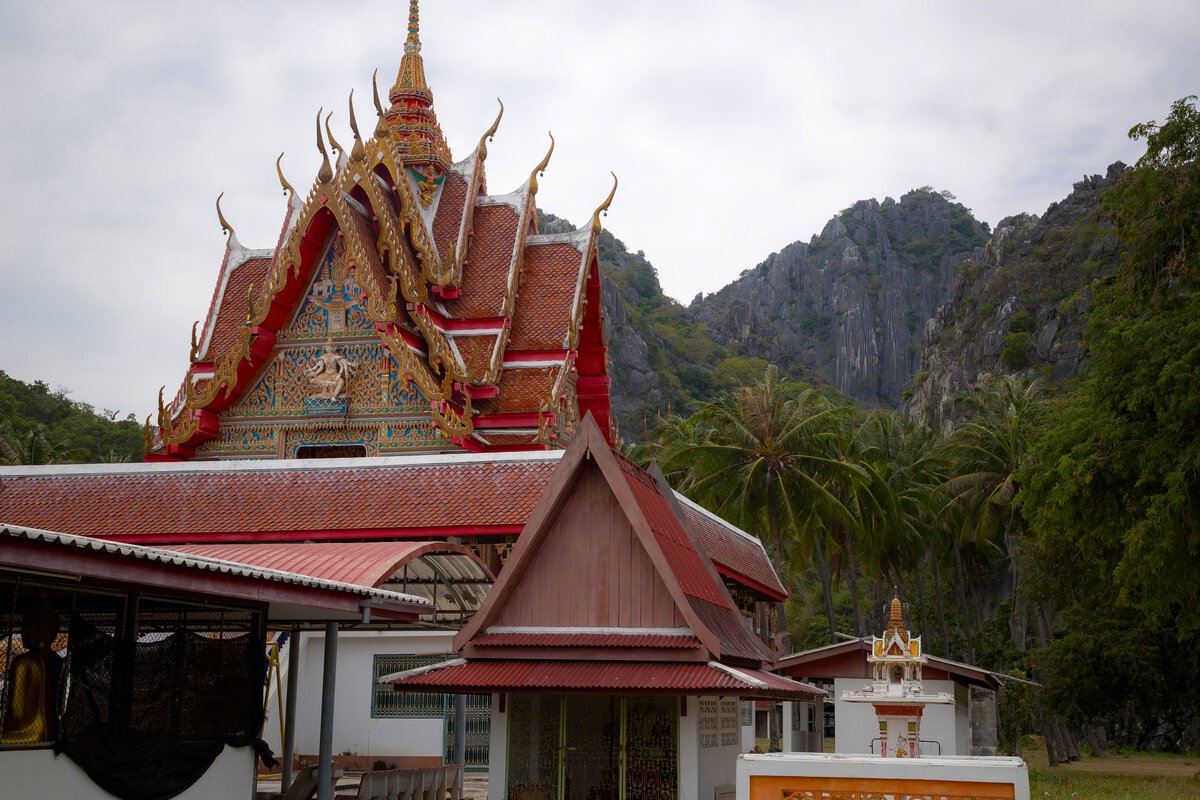
The Thai Monastery in Bodh Gaya is a beautiful and serene Buddhist temple showcasing traditional Thai architecture and design. It is one of the prominent temples in Gaya, offering a tranquil space for meditation and reflection. Established in 1957 by the Thai government and Buddhist monks, the monastery features an ornate facade with a sloping golden roof intricately decorated with Thai-style carvings. Inside, visitors are greeted by a large golden statue of Buddha, exuding a sense of peace and spiritual calm. The manicured gardens surrounding the monastery add to the atmosphere of serenity, making it a peaceful retreat for those seeking spiritual rejuvenation in Bodh Gaya. The Thai Monastery stands as a symbol of the cultural exchange between Thailand and India, attracting pilgrims and tourists from around the world.
When visiting the Thai Monastery in Bodh Gaya, there are several enriching experiences and sights to explore. Here are 3 main things to do and see:
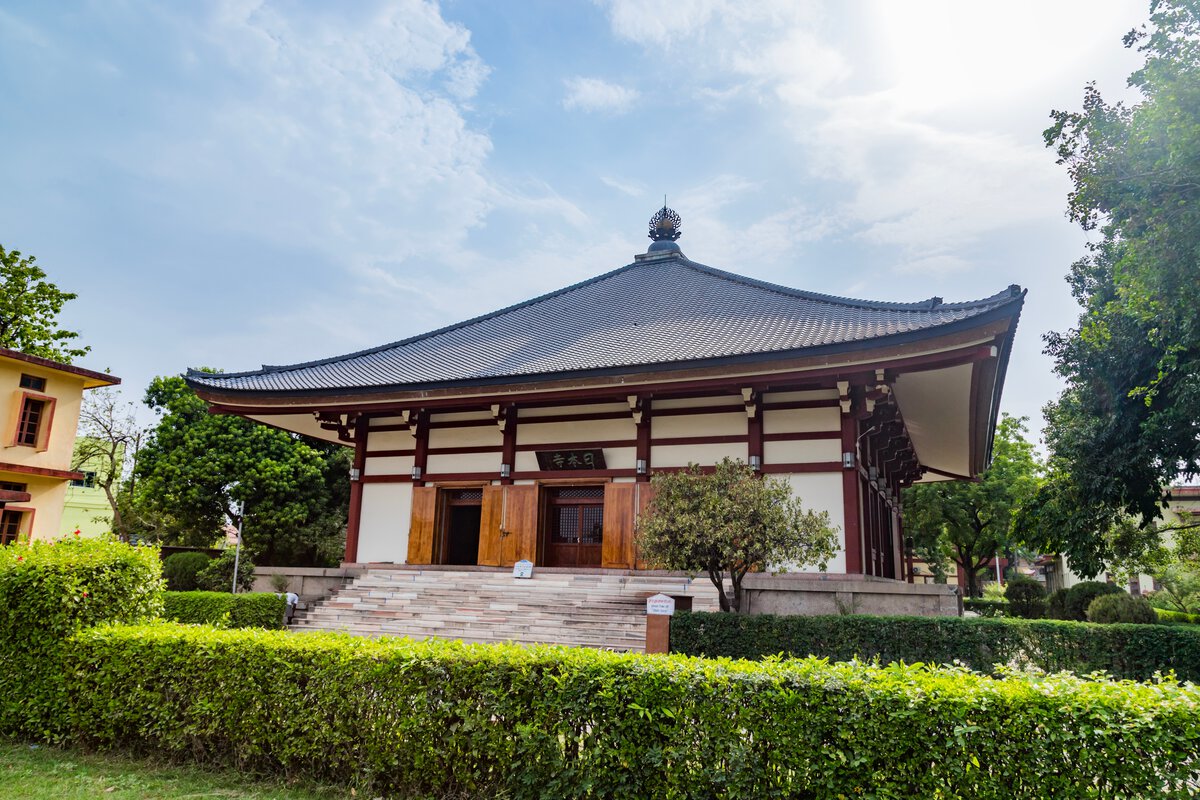
The Indosan Nippon Japanese Temple in Bodh Gaya is a beautifully crafted Bodh Gaya Buddhist temple that reflects the essence of Japanese architecture and spiritual traditions. Built in 1963 with support from the Japanese community, the temple is designed to resemble traditional Japanese wooden structures, creating a serene and minimalistic atmosphere that encourages meditation and contemplation. The temple’s wooden interiors and simple yet elegant design embody the essence of Zen philosophy, making it a peaceful retreat for visitors. Adorned with Japanese-style paintings and sculptures depicting the life of Buddha, the Indosan Nippon Japanese Temple offers a unique cultural and spiritual experience among the many temples in Bodh Gaya. It is a place where visitors can immerse themselves in the teachings of Buddhism while appreciating the harmony between nature and spirituality.
When visiting the Indosan Nippon Japanese Temple in Bodh Gaya, there are several enriching experiences to enjoy. Here are some of the main things to do and see:
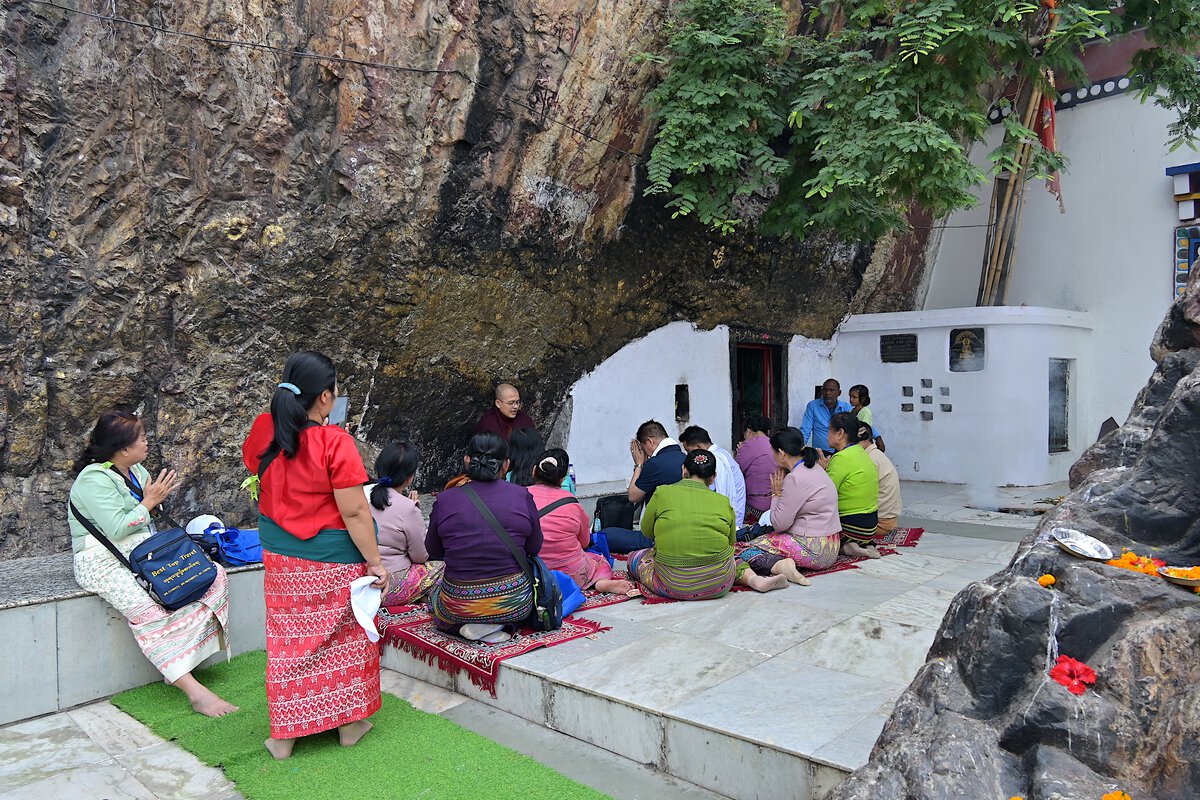
The Dungeshwari Cave Temples, also known as Mahakala Caves, are a significant pilgrimage site near Bodh Gaya, revered for their connection to the life of Gautama Buddha. These ancient caves are nestled on a hillside about 12 kilometres from Bodh Gaya, making them an essential stop for those exploring Buddha temples in Gaya. The caves are believed to be the place where Buddha spent six years practising severe asceticism before attaining enlightenment in Bodh Gaya. Within the caves, visitors can find small shrines dedicated to Buddha, as well as a golden statue of him depicting his emaciated form from this period of self-discipline. The peaceful and secluded atmosphere of the Dungeshwari Cave Temples offers a unique spiritual experience, allowing visitors to reflect on Buddha's journey to enlightenment amidst the natural surroundings.
When visiting the Dungeshwari Cave Temples near Bodh Gaya, there are several unique experiences and sights to explore. Here are some of the things to do and see:
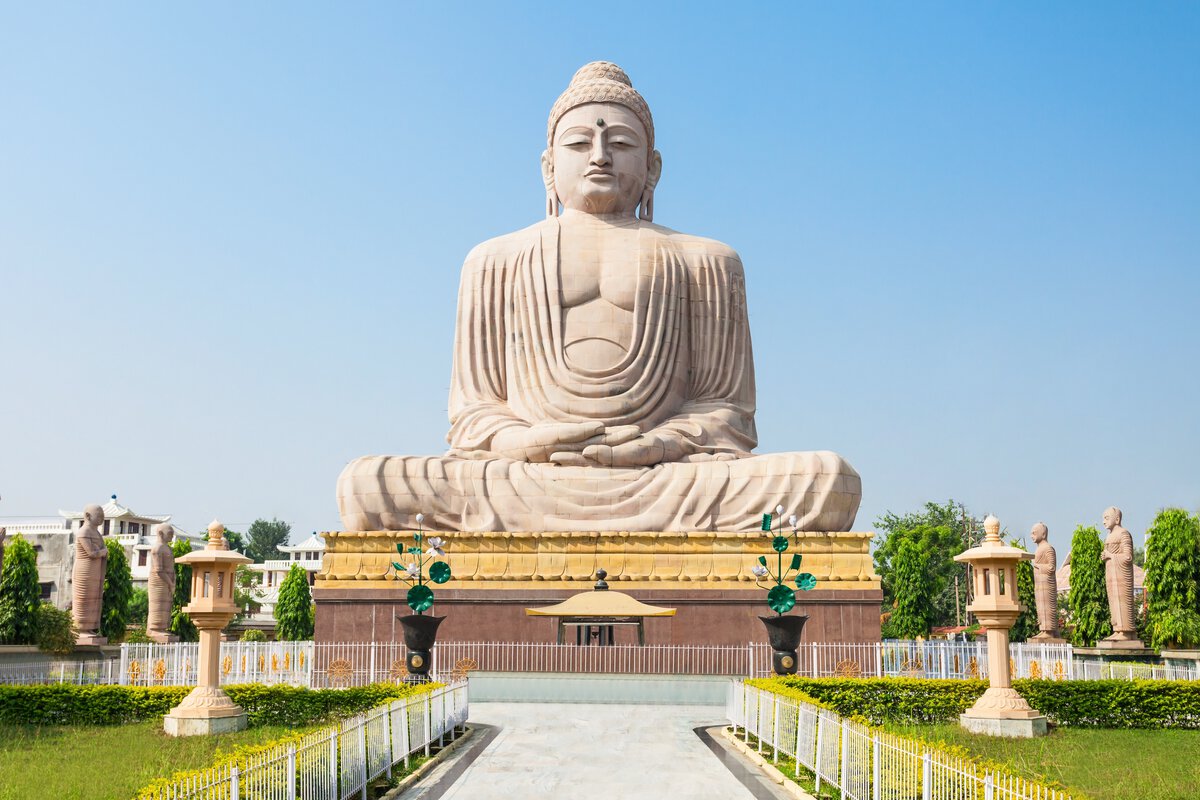
The Great Buddha Statue in Bodh Gaya is a magnificent and iconic landmark, standing as a symbol of peace and enlightenment among the many temples in Bodhgaya. Unveiled in 1989, this towering statue is 80 feet tall and represents Buddha in a seated meditation posture, or dhyana mudra, which signifies deep contemplation. Constructed from sandstone and red granite, the statue is surrounded by smaller sculptures of Buddha’s disciples, creating a serene and spiritual atmosphere. It is situated in a beautifully landscaped garden, offering a peaceful space for reflection and meditation. As one of the most visited sites in Bodh Gaya, the Great Buddha Statue serves as a reminder of the profound teachings of Buddha and draws pilgrims and tourists from around the world who seek to experience its calming presence.
When visiting the Great Buddha Statue in Bodh Gaya, there are several meaningful experiences and sights to enjoy. Here are some of the key things to do and see:
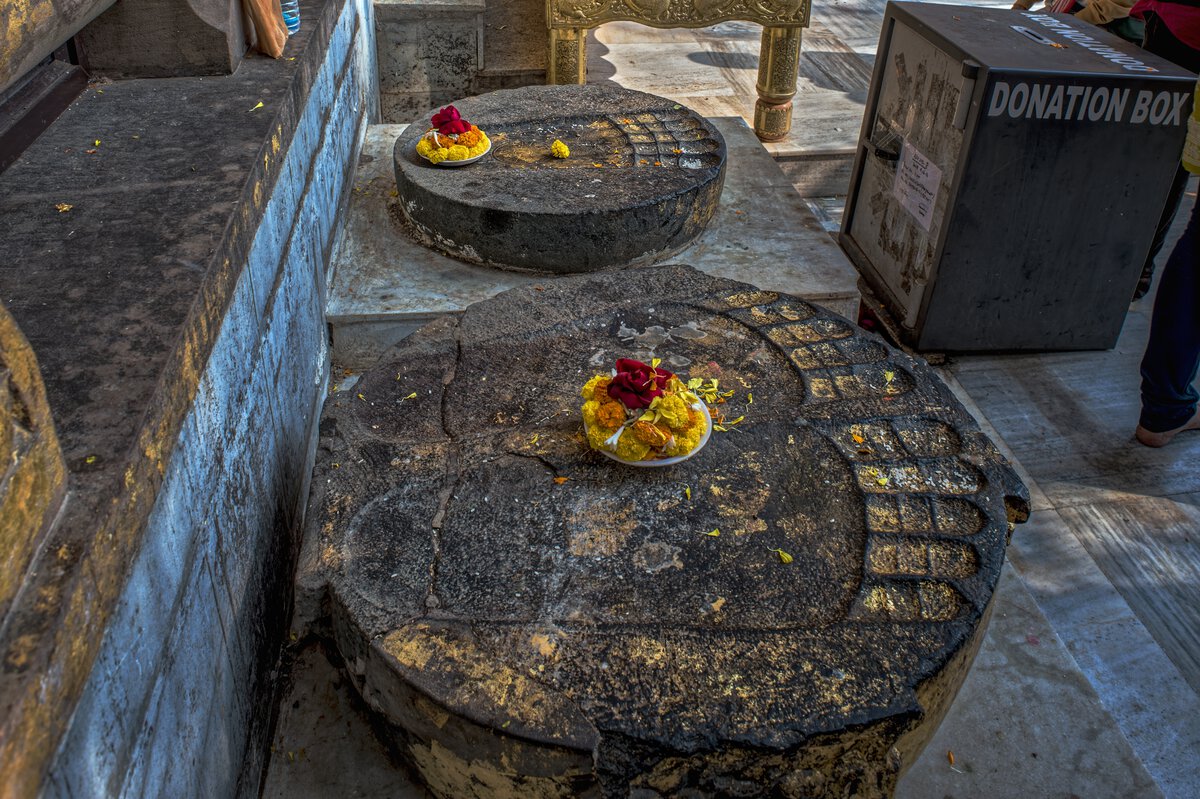
The Vishnupad Temple in Gaya is one of the most revered temples in Gaya, known for its deep religious significance among Hindu pilgrims. Situated on the banks of the Falgu River, this ancient temple is believed to mark the spot where Lord Vishnu’s footprint is embedded in a rock. The temple's origins are said to date back over 1,000 years, with its present structure built in the 18th century by Queen Ahilyabai Holkar of Indore. The temple’s elegant architecture features intricately carved pillars and a sanctum that houses the sacred footprint. Pilgrims visit the Vishnupad Temple to perform Pind Daan rituals for their ancestors, a tradition that has been followed here for centuries, making it a significant spiritual centre in the region.
When visiting the Vishnupad Temple in Gaya, there are several important experiences and sights to explore. Here are a few things to do and see:
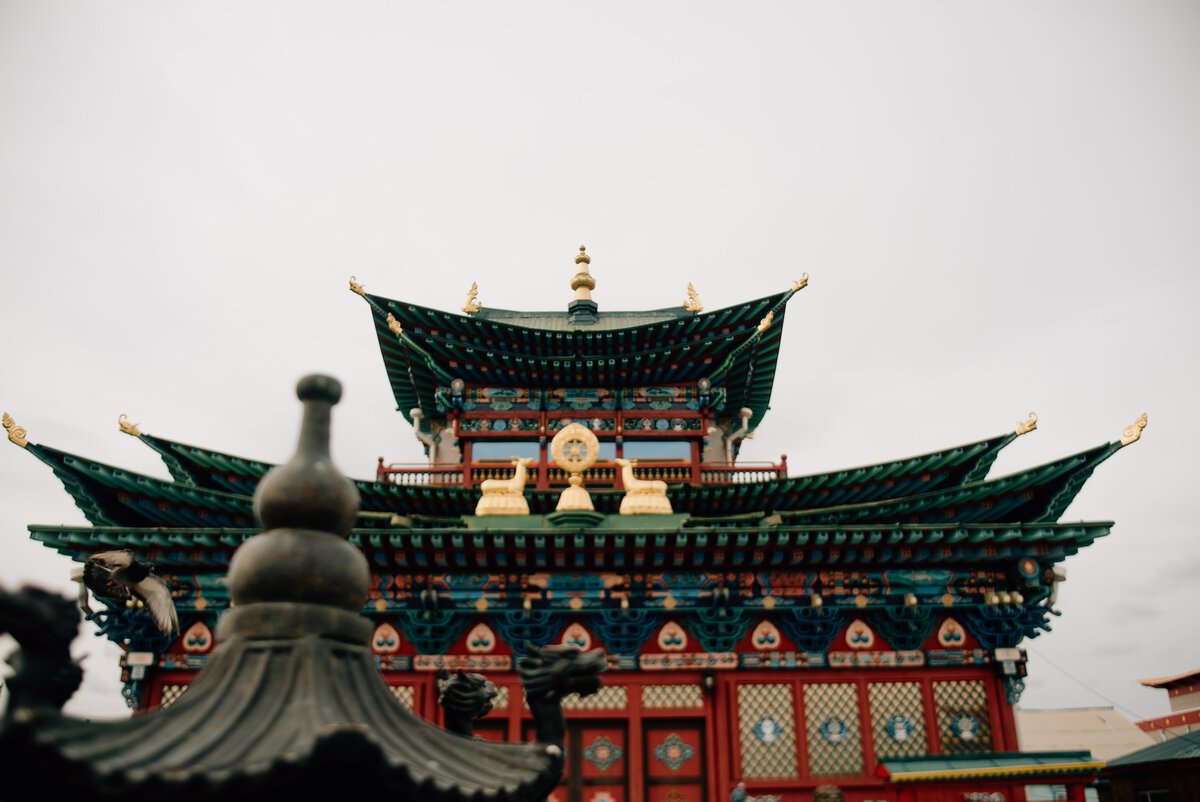
The Chinese Temple in Bodh Gaya is a unique and serene Bodh Gaya Buddhist temple that reflects the beauty of traditional Chinese architecture and Buddhist traditions. Built with the support of the Chinese community, the temple offers a peaceful atmosphere for meditation and spiritual reflection. The temple’s design features ornate pagoda-style roofs, vibrant red and gold decorations, and intricate carvings that highlight elements of Chinese culture. Inside, visitors can find a large Buddha statue and beautifully painted murals depicting scenes from the life of Buddha. As one of the key temples in Bodhgaya, the Chinese Temple serves as a symbol of cultural harmony and provides a tranquil retreat for those seeking to connect with the teachings of Buddha in a serene setting.
When visiting the Chinese Temple in Bodh Gaya, there are several meaningful experiences and sights to enjoy. Here are some of the key things to do and see:
To reach Gaya:
If you are searching for a comfortable stay in Bodh Gaya, the Marasa Sarovar Premiere Resort in Bodhgaya is an ideal choice. This resort in Bodhgaya offers modern amenities and a peaceful ambiance, making it a perfect base for exploring the spiritual and cultural attractions of the area. Guests can enjoy well-furnished rooms and warm hospitality that ensures a relaxing stay.
For those looking to enhance their travel experiences, a Club Mahindra membership is a great option. It provides access to 140+ Club Mahindra resorts worldwide, allowing members to explore diverse destinations beyond Bodh Gaya. The positive member reviews highlight the consistent quality and comfort provided at each resort, making it a valuable choice for those who appreciate both variety and a seamless travel experience.
Bodh Gaya is a destination that offers a deep spiritual journey through its temples, each reflecting unique cultural influences and Buddhist traditions. As a key part of the temples in Gaya, these sacred sites invite visitors to explore their tranquil surroundings, meditate, and immerse themselves in the teachings of Buddha. Visiting these temples in Bodh Gaya allows travellers to experience the peaceful ambience and architectural beauty that make this town a globally revered pilgrimage centre. The serene environment, coupled with the historical and spiritual significance of the area, makes Bodh Gaya a must-visit for those seeking inner peace and a deeper connection with Buddhist heritage.
Mahindra Holidays & Resorts India Ltd. (MHRIL), a part of Leisure and Hospitality sector of the Mahindra Group, offers quality family holidays primarily through vacation ownership memberships and brings to the industry values such as reliability, trust and customer satisfaction. Started in 1996, the company's flagship brand ‘Club Mahindra’, today has over 290,000 members , who can holiday at 140+ resorts in India and abroad.